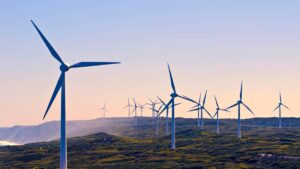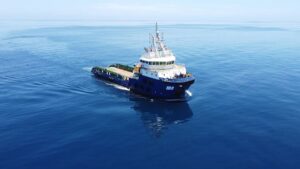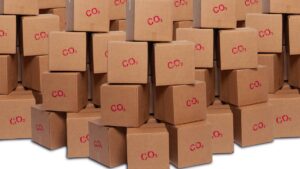Why green hydrogen isn’t just a load of hot air

Pic: Getty Images
- Green hydrogen is at the core of net-zero solutions around the globe
- Ramping up of efforts to develop green hydrogen for the energy transition and as an export commodity is taking shape
- The market is nascent but the sequential doubling in installed electrolyser capacity is proof the race is on
Green hydrogen is expected to be a massive industry of its own in the next decade, used to generate electricity, fuel vehicles, and produce chemicals and heat, but how far do we have to go before we see this coming into play?
A convergence of political, technological, economic and climate factors have propelled the clean fuel to the forefront of net-zero solutions around the globe, including here in Australia where interest has been growing since the release of the National Hydrogen Strategy in 2019.
Over the last three years, there has been a major ramping up of efforts by the global investment community and governments around the world to develop green hydrogen for the energy transition and as an export commodity.
In countries such as Germany, the UK, China, and America, this is clearly highlighted by the tens of billions of dollars invested by their governments to accelerate the production of green hydrogen, which is created from electrolysis powered by renewable electricity such as wind and solar.
Currently, this is the only established method to produce hydrogen without emitting pollution.
The electrolyser is the capital kit or equipment which converts green electricity and water into hydrogen, with industry experts flagging the sequential doubling in installed electrolyser capacity as proof its adoption is accelerating faster than even most bulls would have expected.
For example, the largest electrolyser in the world by install capacity doubled to 10MW in Japan back in 2020, before doubling again in 2021 to 20MW at the Bécancour project in Quebec, Canada.
More recently, in December last year, China’s Baofeng Project – the biggest electrolyser facility in the world – increased capacity seven-fold to 150MW and is already looking to build a 260MW electrolyser facility, powered by solar and nearby wind farms by mid-2023.
As green hydrogen continues its trajectory from cottage industry to mainstream manufacturing, we will likely see a ramping-up in electrolyser capacity installed – with more GW capacity coming online.
Decarbonisation is key
The importance of green hydrogen for the decarbonisation of the world’s economies cannot be underestimated.
In hard-to-abate sectors like long distance transport, chemical manufacturing, and iron and steel production, its deployment is recognised as a key transition pillar to reach net zero emissions, making it essential for the world to meet the goals of the Paris Agreement and keeping temperature gains under 2 degrees Celsius.
But it is clear some countries are advancing their green hydrogen production capacities at faster rates than others.
Australia has made much about its green hydrogen ambitions but has committed little actual funding in comparison to countries such as Germany, the UK, China, and America.
Instead, the Morrison Government has shown its support by investing in various things such as a network of hydrogen technology clusters (H2TCA) in major cities and regional towns across Australia.
With funding awarded by National Energy Resources Australia (NERA) – created under the Turnbull government – the idea is each cluster will establish a thriving green hydrogen industry and identify supply chain investments.
The Government has also entered into a series of partnerships with Germany, South Korea, and Japan to explore the possibility of future hydrogen exports.
And although there has been a lack in government funding here in Australia, there has been an abundance of non-binding announcements coming in thick and fast by companies looking to play a part.
One such company is Fortescue Future Industries, whose latest agreement with European utility business E-ON has been described by experts as representing a ‘seismic shift’ in the commercial scaling up of green hydrogen.
The two companies plan to work together to replace one-third of Germany’s Russian gas imports with 5 million tonnes per annum of renewable green hydrogen at a time when skyrocketing prices of hydrocarbons have accelerated the inevitable need to decarbonise.
However, the market is still quite nascent.
Bahador Tari is an associate and hydrogen lead at Energetics, a climate and energy risk management consultancy developing approaches for ASX200 and all levels of government.
He says the majority of the current 90 or so projects are currently in the feasibility and demonstration stages.
“The industry is not only scaling up in terms of the number of projects in the pipeline but also in terms of the average size of these projects,” he explains.
“A number of ‘gigawatt- scale’ projects have been announced in Australia however, it is worth noting that these are still subject to final investment decisions and would come into operation from 2025 onwards.”
Tari explains that while several ‘gigawatt’ scale projects have been announced in Australia, they are still subject to final investment decisions and would come into operation from 2025 onwards.
Only a handful of projects have moved beyond this initial trial phase – such as with AGIG’s Hydrogen Park in South Australia, which has been operational since mid-2021.
“There is broad recognition across the Australian market that to capitalise on the hydrogen opportunity, partnerships/JVs need to be established across the hydrogen value chain,” he adds.
And ultimately, to accelerate investment, a ‘renewable gas/hydrogen’ target would need to be established in Australia.
With supply chain and energy security being more important than ever, thanks to rampant fossil fuel inflation and the Russian invasion of Ukraine, there is no doubt momentum for decarbonisation will continue.
Related Topics
UNLOCK INSIGHTS
Discover the untold stories of emerging ASX stocks.
Daily news and expert analysis, it's free to subscribe.
By proceeding, you confirm you understand that we handle personal information in accordance with our Privacy Policy.








